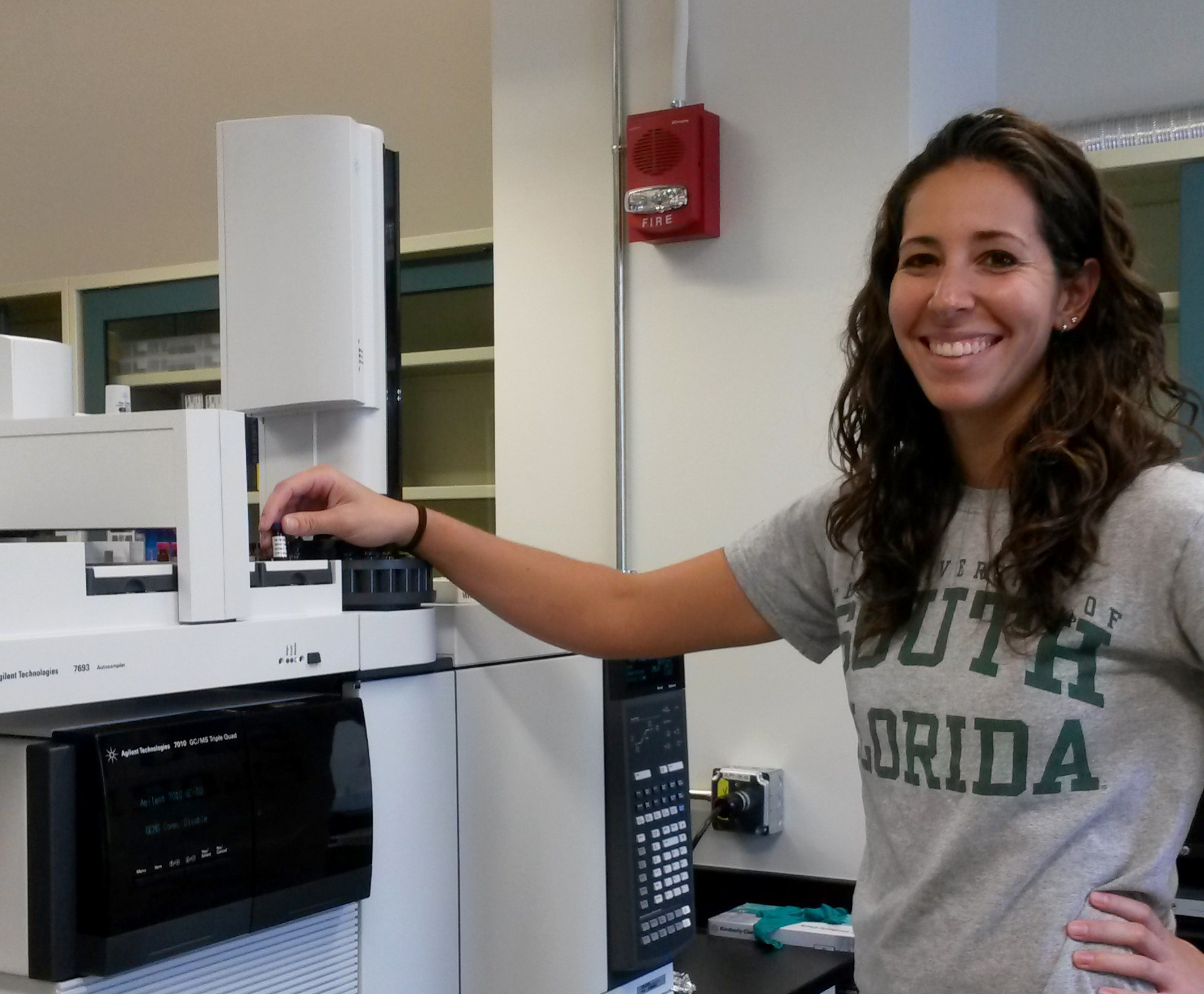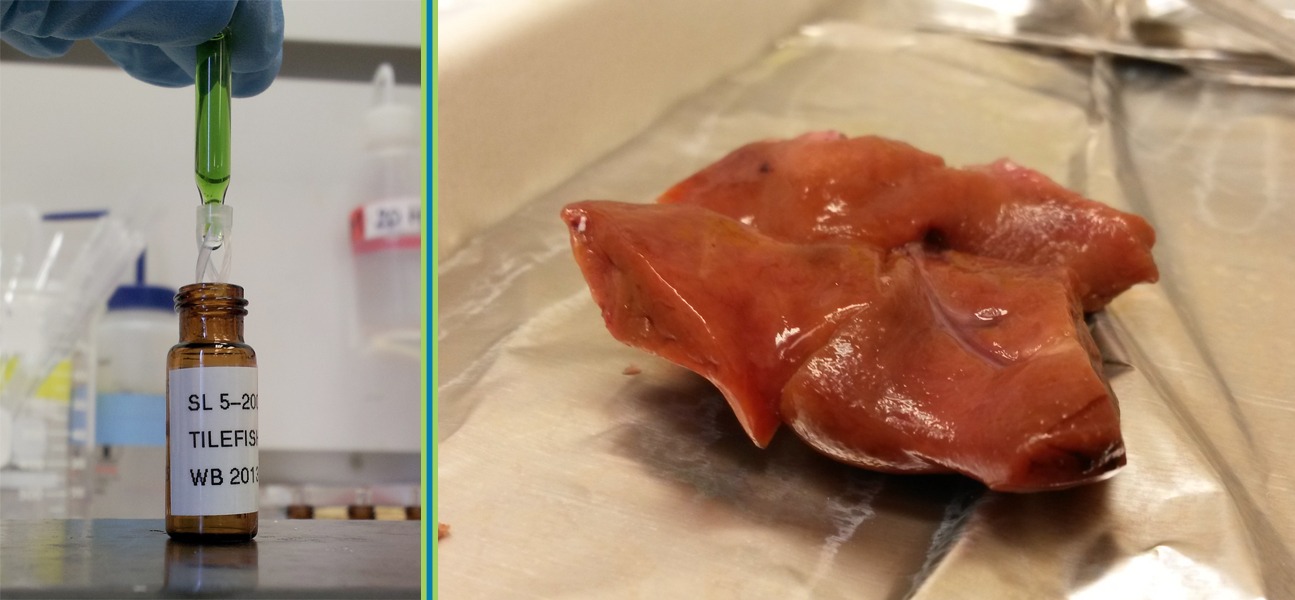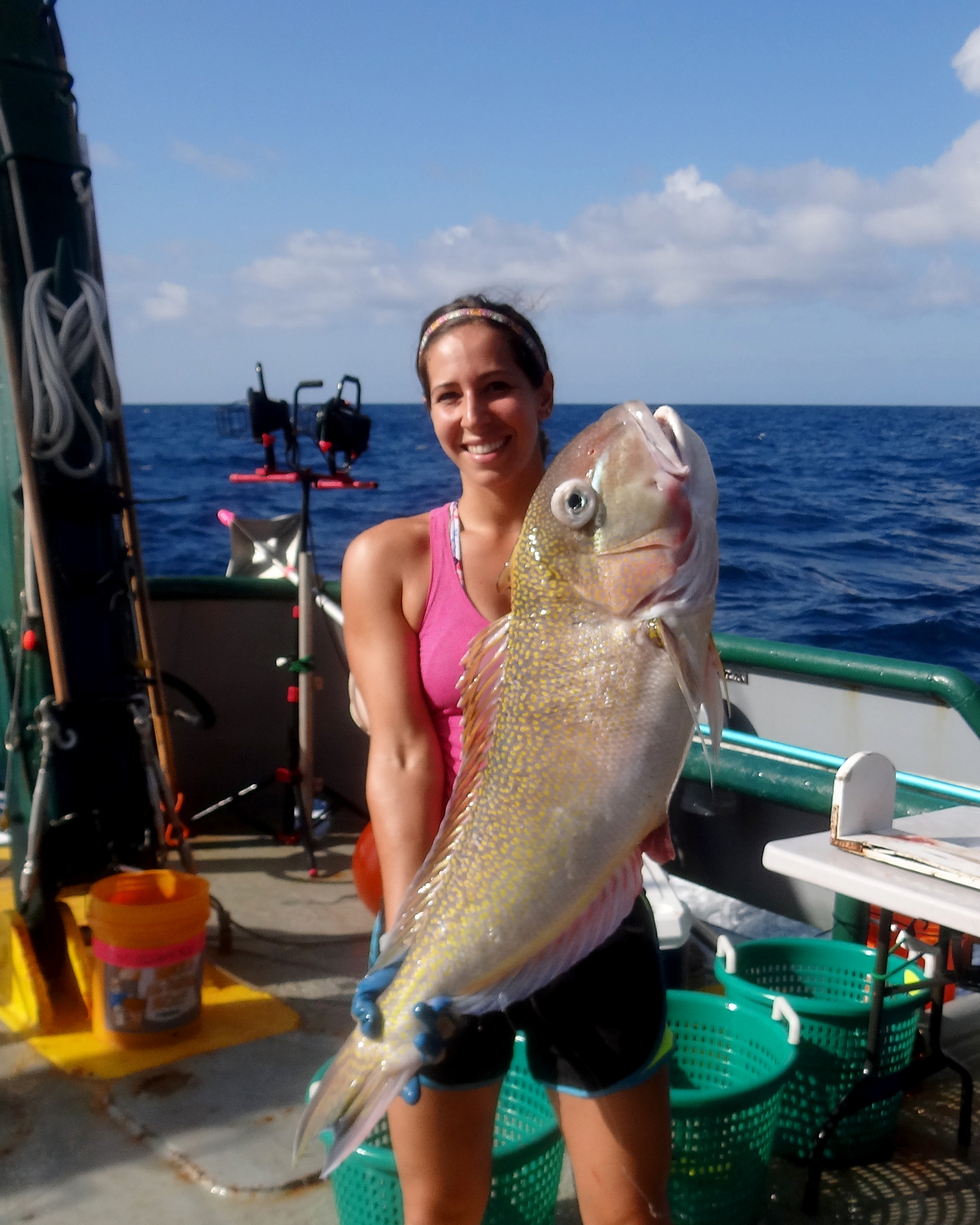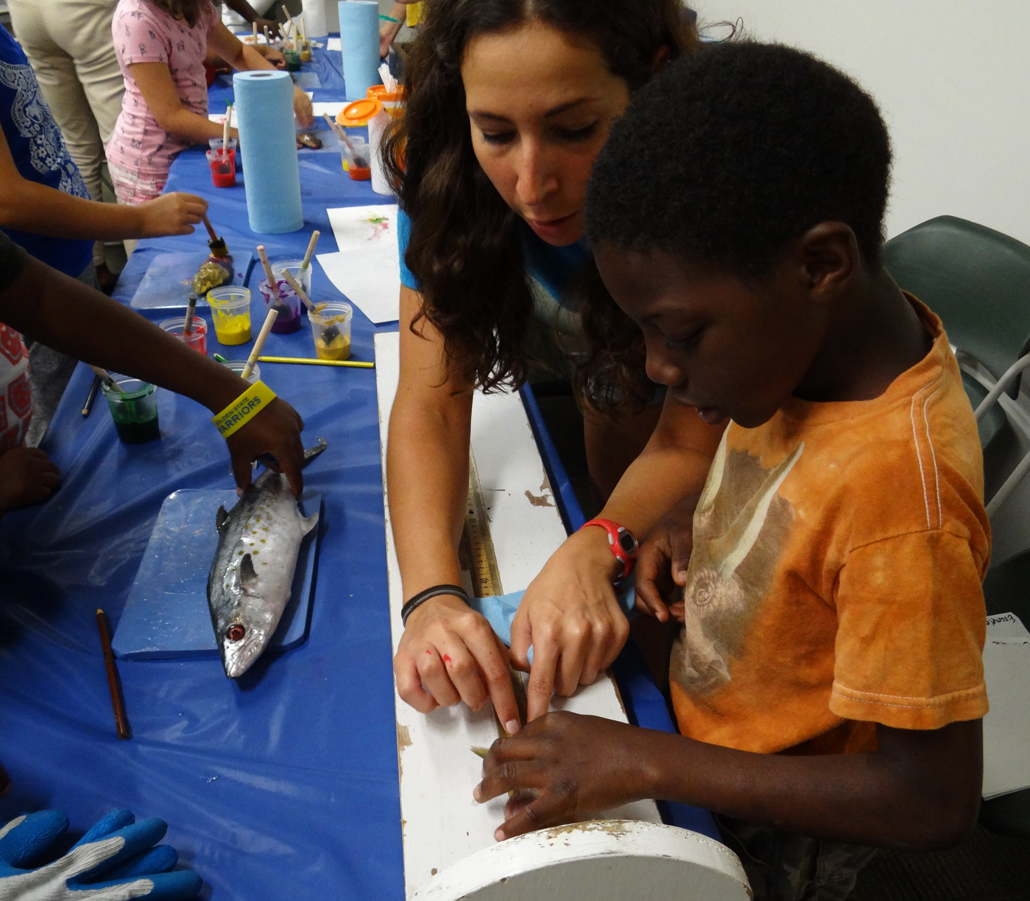
Susan Snyder, Student of the Month, November 2016

The public often asks “Is Gulf seafood safe to eat after the Deepwater Horizon spill?” Short answer: Yes. So long as we’re not eating gallbladders or fish livers. Susan Snyder studies ecotoxicology at the University of South Florida-College of Marine Science where she takes tissues and bile from fish and analyzes the amount of oil in them. Susan is the C-IMAGE Student of the Month for November 2016!
Susan’s research focuses on how sick a fish gets when it is exposed to oil, specifically exposure to Polycyclic Aromatic Hydrocarbons (PAHs), the larger and more toxic components of oil. Her research on PAH Exposure in Gulf of Mexico Demersal Fishes, Post-Deepwater Horizon in Environmental Science and Technology.
What is the focus of your research? How will your findings contribute to the overall understanding of oil spills or oil spill response?
I measure polycyclic aromatic hydrocarbons (PAHs) in fish tissues. PAHs are the toxic and persistent component of oil. We measure PAH metabolites in fish bile to get a level of short-term (days) exposure to oil. The idea behind this method is similar to a urinalysis drug test of a human. We also measure PAH levels in fish liver and muscle tissue to understand accumulation of these contaminants. Chronic exposure and accumulation of PAHs is linked with negative health effects in fish, such as liver cancer.
This research is very important because we are generating a baseline of PAH contamination in multiple fish species around the entire Gulf of Mexico continental shelf. We have sampled thousands of individual fish from dozens of important species (e.g. snappers, groupers, tilefish) from the West Florida Shelf, the Deepwater Horizon area, the Texas coast and the entire Mexican coastline. These data will be critical in assessing impacts of the next oil spill. In addition, other C-IMAGE researchers are studying negative health impacts in the same individuals I am measuring contaminants in. We plan to correlate our data to see if PAH load links with increased occurrence of negative health effects.

What path did you take to make it to where you are now? Bachelors degree, internship experience, working experience?
Growing up, my parents pushed me towards science and a career in health care. I enjoyed science and developed an interest in chemicals inside the body. So, my plan was an undergraduate degree in science and to attend pharmacy school. I received a B.S. in Biology and a minor in Chemistry from the State University of New York at Geneseo. Along the way, I took a few study abroad trips and a Toxicology class that made me realize I wanted to pursue the field of Environmental Toxicology. My last year at Geneseo I joined a lab and worked on my first scientific research project. After graduation, I came to the University of South Florida to begin my master’s degree in Marine Resource Assessment. After completing my master’s degree, I continued in the USF PhD program to continue my research.
What initially interested you in working at USF-Marine Science?
I came to the USF College of Marine Science because Dr. Steve Murawski had just received the C-IMAGE-I grant and was looking for graduate students to work on the project. I was thrilled to learn he was in need of students to study impacts of the Deepwater Horizon blowout on Gulf of Mexico fishes.
What research tasks are you completing this week (or this month)?
Currently, I am measuring PAHs in golden tilefish liver tissue. Every day for the next few months I am in the lab extracting our chemicals of interest from the liver tissue, running the samples on our new Agilent GC-MS/MS and interpreting the output. Today, I have golden tilefish livers sampled in 2016 from the Mexican Bay of Campeche on the instrument. I have thousands of livers and chromatograms to process in the next few years.

Which of your findings or research has been most eye-opening? Were there any moments or facts that just made you say “Wow! I did not expect that.”?
The most interesting thing I have seen in our results so far is the strong impact of species on contaminant load. Due to differences in behavior, diet, habitat, physiology etc., we are seeing differences in PAHs measured.
Also, it’s been a very eye-opening experience to go out on our fishing trips, work longlining and see the offshore oil infrastructure up close.
Why do you study fish health? What inspires you? Was there an instance in your past where you realized the importance of understanding your research topic or is it an important aspect of your future career?
I love my job. I love that every day I come into work and my job is to quantify anthropogenic pollution and its impacts on marine resources. I enjoy the hands-on time in the lab, learning the analytical instrumentation and the very apparent real world applications and I hope to pursue a career doing similar research in the field of Environmental Toxicology/Environmental Chemistry.



